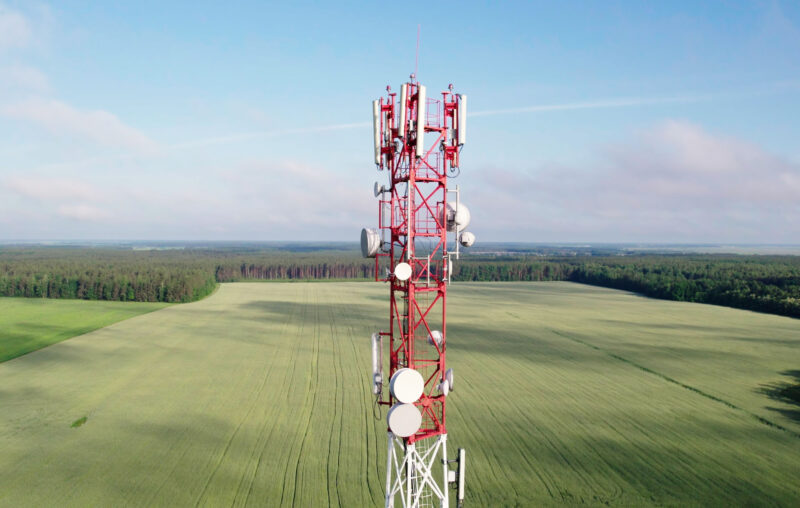
As the old country proverb goes, “if it’s happened once, it’s damned-shor’ gonna happen again.”
Robert Wright’s forthcoming book, New Deals Exposed: How the Miseries of the Great Depression are Being Repeated Today, makes the convincing case that the sort of good-intentioned lunacy which marked New Deal policy failures is happening all over again, as the world leaps madly into the breach of the “Great Reset” and “Green New Deal.”
In the 1930s, under the auspices of the Rural Electrification Administration, the Franklin D. Roosevelt administration spent great gobs of other peoples’ money on the noble-sounding goal of bringing “the modern service of electric power to the farm families in the backcountry.”
Largely forgotten now is the fact that many farmers didn’t need the new-fangled stuff, or already had clever workarounds in place, or were well on their way to getting electricity provided before the government “aided” them. Heavy-handed administration bureaucrats, however, were more intent on consolidating power (electoral, not electrical) than in helping the salt of the earth. They ran blithely past these nettlesome facts, even going so far as to attack private electrification initiatives in order to be sure there was no competition to their taxpayer-funded largesse. Shocking, I know…
Samuel Insull, once personal secretary to Thomas Edison and later a titan of the early power industry, posed a serious threat to a consolidated government electricity sector. His utility company served more than 15 million customers in 32 states, and made electricity affordable for small businesses and households. Destroyed by the Great Depression, he was hounded by government lawsuits which sought to eliminate him from the sector forever. He was tried three times for fraud, and though acquitted each time was ruined financially and hounded out of the country.
Wright’s book tells us that the growth of electrical power plants and grids in the 1920s, prior to the New Deal, was astonishing, “…almost doubling the capitalization of the old railroad industry.” Not only that, but rural folks were pretty crafty, often producing their own power with windmills or diesel generators. And even though New Deal administrators joked that “one doesn’t go into a retail store and buy a package of electricity over the counter,” that is exactly what many farmers did: go to town with large, cutting-edge battery technology and pay to get them charged. So not only was the electrification “need” overblown, Wright argues persuasively that “rural electrification slowed the development of small-scale wind, solar, hydroelectric and other renewable sources, as well as batteries” by offering a taxpayer-subsidized government alternative that was impossible to compete with.
That was then, you say, today is different. Not so much. The US Department of Agriculture’s ReConnect program is busily repeating the mistakes of a century ago, for precisely the same politically motivated reasons. The 2022 Infrastructure and Investment and Jobs Act allocates $47.5 billion to fund broadband internet connectivity to the hinterland. The ReConnect program assures us that “e-connectivity for all rural Americans is a modern-day necessity,” noting that “22.3 percent of Americans in rural areas and 27.7 percent of Americans in Tribal lands lack [high-speed internet] coverage.” I’ll vouch for the problem, having paid for crummy low-speed internet for the last half decade. It’s truly annoying.
We should not be at all convinced, however, of either the effectiveness or the altruism of the initiative’s mandate. While ReConnect is proud to have “invested over $1 billion to date,” it’s hard to be optimistic the money is going to be well spent. Here’s what I mean:
Census data shows there are around 22.6 million “rural” homes in America. If around a quarter (“22.3 percent” to “27.7 percent”) of these homes are without broadband, that means (worst case) that around 6 million homes might benefit from this kind of “universal availability.” Doing the math, that means that taxpayers nationwide (including those currently without broadband) are being forced to contribute $7,916 to every rural home lacking this “modern-day necessity.” Or take the very first example for 2022 (the Alaska Telephone Company), proud recipient of a 100-percent grant under the program. It claims to service 92 households at the bargain price of $33,017,636. That means taxpayers are underwriting $359,000 per household up in Skagway and Chilkat.
At those rates, I’m betting most rural folk would just prefer the cash. Or maybe tax relief. Because it’s not as if there aren’t alternatives. My parents, who are about as rural as it gets, have been using Elon Musk’s Starlink connection for about a year. For $7,916, they could fund their astonishingly fast, totally reliable high-speed internet connection for the next 7 years. Folks on the Navajo reservation could use $359,000 per household on a Verizon hotspot and have a lot left over for things much higher on their list than broadband access. A stark difference between these private, home-grown solutions and the one being foisted by the USDA is that they are available now (not 10 years from now). Moreover, the money won’t get siphoned off by bureaucrats and middle-men in politically savvy cable companies, who will ultimately demand rural folks pay them $100/month instead of Starlink or Verizon.
Because the historical corollaries are so starkly similar, I’ll wager that Musk will go the way of Insull. The “greedy” capitalist will be brought to heel by a “protective” cadre of enlightened functionaries who bristle when private companies start to cut in on their assistance racket. In fact, it’s already happening: Starlink has been effectively banned from bidding for these connectivity dollars.
We are told that the rural broadband program is a “generational opportunity to connect every home in the nation…” Not only is such a sentiment more than a little condescending to rural folks, but it blatantly increases dependence on centralized government programs. Just as in the New Deal electrification boondoggle, it is a much better value, from a bureaucratic perspective, to waste taxpayer money than to allow organic, free-market solutions to beat them to the punch.


0 Comments